Asakusa, is a vibrant district that offers a glimpse into Tokyo’s interesting history and culture. It is home to some of the most iconic landmarks in Tokyo, such as the Senso-ji Temple, the bustling Nakamise Shopping Street, and the Tokyo Sky Tree a short walk away.

You can easily spend an entire day exploring Asakusa, from visiting historic temples and shrines to rikshaw rides or strolling the streets in traditional kimonos. The district is also known for its festival, which attracts thousands of visitors every year.
Top Attractions in Asakusa

Asakusa is one of the most popular destinations in Tokyo. Famous for its traditional Japanese atmosphere, ancient temples, and delicious street food. here’s a few of the highlights in Asakusa that are worth visiting.
Sensoji Temple

At the top of the list has to be Sensoji Temple, the most famous temple in Asakusa and one of the oldest in Tokyo. It was founded in the 7th century and is dedicated to the Buddhist goddess of mercy, Kannon.
The temple is known for its impressive entrance gate, called the Kaminarimon or Thunder Gate, which features a large paper lantern and a massive statue of Fujin, the god of wind, and Raijin, the god of thunder.
After passing through the gate, visitors will walk along Nakamise-dori, a bustling street lined with traditional Japanese shops selling souvenirs, snacks, and crafts. At the end of the street, visitors will arrive at the main hall of Sensoji Temple, where they can offer prayers and purchase good luck charms and omamori.
Asakusa Shrine
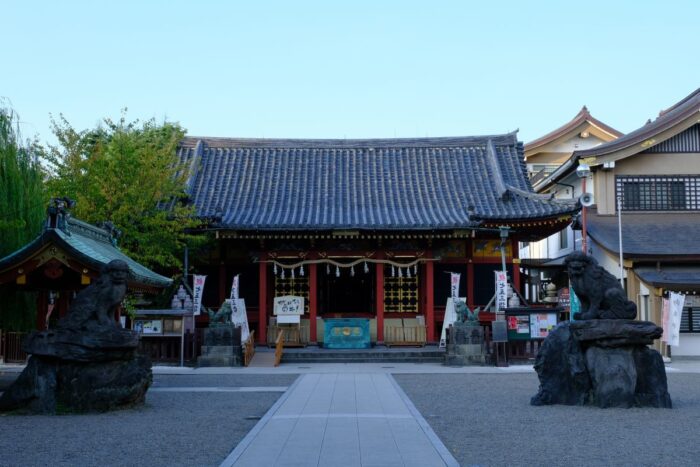
Asakusa Shrine, also known as Sanja-sama, is a Shinto shrine next to Sensoji Temple. It is dedicated to the three founders of Sensoji Temple and is one of the most important shrines in Tokyo. The shrine is known for its vibrant festivals, including the Sanja Matsuri, which takes place in May and attracts millions of visitors from all over Japan.
The shrine grounds are also home to a beautiful garden, called the Asakusa Engei Garden, which features a pond, a tea house, and seasonal flowers and plants.
Tokyo Skytree
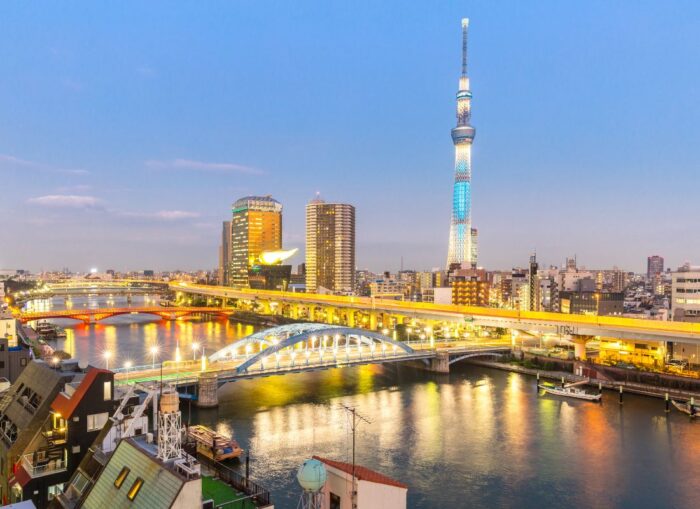
The Tokyo Skytree is a modern landmark that dominates the skyline of Asakusa. It is the tallest tower in the world, standing at 634 meters tall, and offers breathtaking views of Tokyo and the surrounding area. You can ride the elevator to the top of the tower and enjoy panoramic views from the observation deck.
The Tokyo Skytree also features restaurants, shops, and entertainment facilities, including an aquarium and a planetarium.
More Things To Do In Asakusa

But the list doesn’t end here. There are plenty of things to see and do. Here’s 12 more things to add to your itinerary:
- Visit the Asakusa Culture Tourist Information Center – Located just a few steps from Kaminarimon Gate, the center offers free Wi-Fi, maps, and brochures. You can also enjoy a panoramic view of Asakusa from its observation deck.
- Try traditional Japanese sweets – Asakusa has many shops selling traditional Japanese sweets, such as manju (sweet bean paste cakes) and senbei (rice crackers). Try some at a local shop.
- Take a rickshaw ride – Explore Asakusa in a traditional rickshaw. You can choose from courses, including one that takes you to the nearby Sumida River. Here’s everything you need to know.
- Visit the Asakusa Engei Hall – This theater hosts rakugo (traditional Japanese comic storytelling) and manzai (two-person stand-up comedy) performances. Check the schedule and enjoy some laughs.
- Try some Hoppy – Hoppy is a low-alcohol beer-like drink that originated in Asakusa. Try some at a local bar.
- Wear a kimono – If you’d like to try walking around the streets of tokyo in a kimono, the Asakusa is the place to do it. Check out our guide on renting and wearing a kimono in Asakusa
- Take a Sumida River Cruise – Enjoy a scenic boat ride on the Sumida River. You can choose from courses, including one that takes you to Tokyo Bay.
- Check out the Asakusa Hanayashiki Amusement Park – This amusement park, which opened in 1853, is the oldest in Japan. It has attractions, including a roller coaster and a haunted house.
- Visit the Asahi Beer Tower – This landmark building, which looks like a beer glass, is near Asakusa Station. You can enjoy a panoramic view of Tokyo from its observation deck.
- Try some tempura – Asakusa has many restaurants serving tempura (battered and deep-fried seafood and vegetables). Try some at a local restaurant.
And this is just a sample of the many things you can do in Asakusa. Whether you’re interested in history, culture, or just having fun, Asakusa has Something to interest all.
Food and Drink in Asakusa
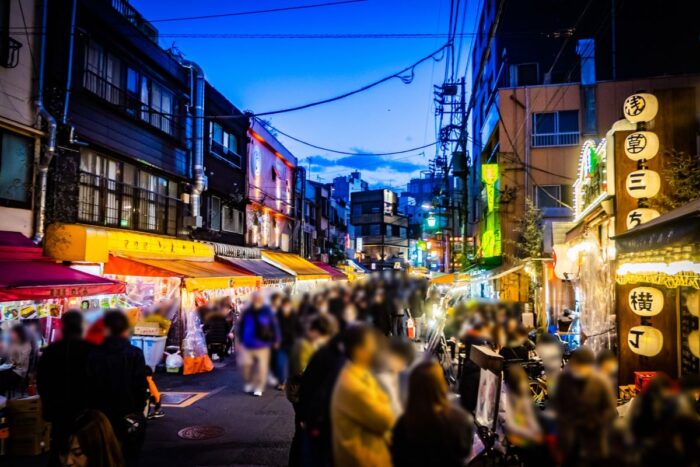
Asakusa is a foodie’s paradise, with a wide variety of delicious street food and restaurants to choose from. Whether you’re in the mood for something sweet or savory, traditional or modern, Asakusa has it all.
Street Food
For a quick and tasty snack, head to Nakamise-dori, the famous shopping street leading up to Senso-ji Temple. Here you’ll find street food vendors selling everything from savory yakitori skewers to sweet dorayaki pancakes. Some must-try street food options in Asakusa include:
- Senbei (rice crackers)
- Taiyaki
- Melonpan (sweet bread with a crispy outer layer)
- Kibi dango (sweet mochi balls)
If you’re looking for something refreshing to drink, try a cup of matcha (green tea) or a cold glass of ramune (Japanese soda) from one of the street vendors.
Kimono Rental

One of the best ways to experience Japanese culture is by wearing a kimono, and Asakusa is a great place to do just that. Renting a kimono in Asakusa is a popular activity for both tourists and Tokyoites. There are many shops in the area that offer kimono rental services, and the prices are generally reasonable.
One of the most popular kimono rental shops in Asakusa is Kyoto Kimono. They offer a wide variety of kimonos to choose from, and their prices are very reasonable. The rental fee includes everything you need to wear a kimono, including the kimono itself, obi (sash), tabi (socks), and zori (shoes). They also offer hair and makeup services for an additional fee.

Another great option for kimono rental in Asakusa is Asakusa Taisho Romankan. They offer rental plans, including a kimono plan and a hakama plan. The kimono plan costs 5,000 yen after tax, and the hakama plan costs 6,000 yen after tax. They also offer additional plans, such as a couple’s plan and a student kimono plan.
Overall, renting a kimono in Asakusa is a great way to experience Japanese culture and to take some memorable photos. Just be sure to choose a reputable rental shop and to follow the rules and etiquette.
More: Best Kimono and Yukata Rental Services In Tokyo
Rickshaw Rides
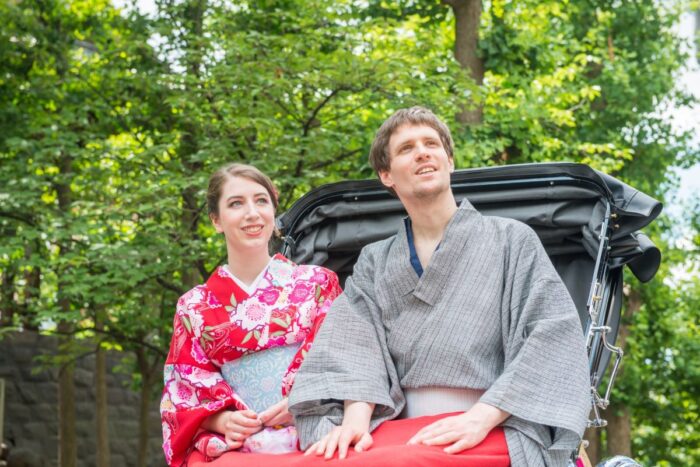
One of the most popular activities in Asakusa is taking a rickshaw ride. These man-powered carts are a fun and unique way to explore the area while enjoying a leisurely ride. The rickshaw drivers, or “shafu,” are often dressed in traditional Japanese clothing and are knowledgeable about the history and culture of Asakusa.
There are companies offering rickshaw rides in Asakusa, with routes and durations to choose from. One of the most popular routes is around the Kaminarimon Gate area, Sumida Park, and the Matsuchiyama Shoten area, which takes about 30 minutes. Another option is a 60-minute course that takes you around Asakusa’s famous attractions like Sensoji Shrine and Sukeroku Yumedori Street.
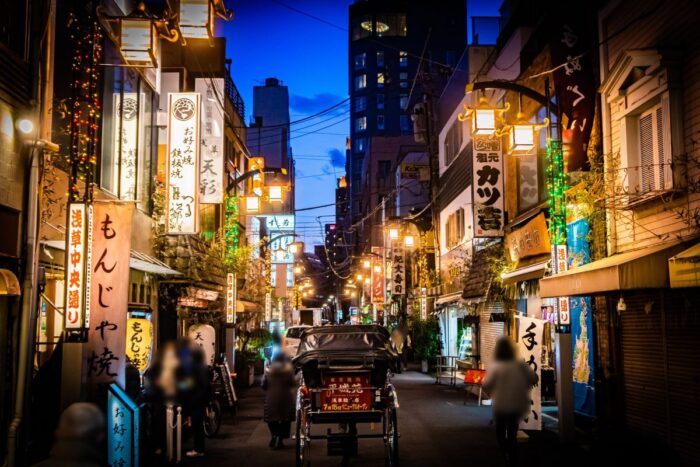
Prices for rickshaw rides vary depending on the route and duration but generally start at around 9,000 yen for a 30-minute ride. It’s recommended to book in advance, especially during peak tourist season.
It’s a great way to relax and take in the sights and sounds of Asakusa while learning about its rich history and culture.
More: Asakusa Rickshaw Tours
Shopping in Asakusa
Asakusa is a great place to shop for traditional Japanese souvenirs and gifts. From the famous Nakamise Shopping Street to the modern Asakusa Rox Shopping Mall, there are plenty of options for visitors to explore.
Nakamise Shopping Street

Nakamise Shopping Street is a 250-meter-long shopping street that leads up to Sensoji Temple. It is one of the oldest shopping streets in Japan and has been around since the 18th century. The street is lined with over 50 shops that sell traditional Japanese souvenirs and snacks.
Some popular items to look out for include:
- Senbei (rice crackers)
- Maneki Neko (lucky cat figurines)
- Tenugui (hand towels)
- Kokeshi (wooden dolls)
- Kanzashi (hair ornaments)
Be sure to try the famous Ningyo-yaki (sweet cakes shaped like dolls) while you’re there.
Asakusa Rox Shopping Mall

The Asakusa Rox Shopping Mall is a modern shopping complex just a few minutes’ walk from Sensoji Temple. It has over 100 stores spread over six floors, including a food court and a cinema.
Some popular stores in the mall include:
| Store | Category |
|---|---|
| Uniqlo | Clothing |
| Don Quijote | Discount store |
| Tsutaya | Bookstore |
| Starbucks | Coffee shop |
If you’re looking for a break from shopping, head to the top floor of the mall for a great view of Sensoji Temple and the surrounding area.
Ryokans in Asakusa

Asakusa is home to many traditional Japanese ryokans, which offer a unique and authentic experience for travelers. These ryokans provide a glimpse into the traditional Japanese way of life, with tatami mats, futons, and communal baths.
About half of the ryokans that made our list of the best Japanese Inns in Tokyo are in the area so it’s a great place to try this typically Japanese style of accommodation.
One of the most popular ryokans in Asakusa is Ryokan Asakusa Shigetsu. This ryokan is conveniently just a 5-minute walk from Asakusa Subway Station and is near Nakamise-dori Street and Senso-ji Temple.
Asakusa Hotel Hatago is another ryokan that offers Japanese-style rooms with tatami-matted floors and shoji screens. The hotel achieves a calm atmosphere reminiscent of ancient Edo through its decor. There’s also Asakusa Ryokan Toukaisou, which offers private rooms and dorms at affordable rates.
Overall, staying in a ryokan in Asakusa is a great way to experience traditional Japanese culture and hospitality.
Hotels in Asakusa

For those looking for a more luxurious experience, the Asakusa View Hotel is a great option. While not a traditional ryokan, it offers Japanese-style rooms with tatami mats and futons, as well as a communal bath with stunning views of Tokyo Skytree.
There are plenty of hotels in Asakusa to choose from. Hotel Gracery Asakusa is a popular choice, with stylish rooms that come with thoughtful amenities such as Japanese teas and in-room nightwear. Another option is Richmond Hotel Premier Asakusa International, which offers spacious rooms and a convenient location near popular attractions.
For budget-conscious travelers, there are hostels and guesthouses in Asakusa. Khaosan Tokyo Origami is a popular hostel that offers dormitory-style rooms and private rooms at affordable rates. And for travelers who want to experience a capsule hotel, there is the First Cabin Asakusa, which offers compact yet comfortable sleeping quarters.
Overall, Asakusa offers a wide range of accommodation options for travelers, from traditional ryokans to modern hotels and budget-friendly hostels.
Getting to Asakusa

Asakusa is one of the most popular tourist destinations in Tokyo, with its historical landmarks, traditional shopping streets, and scenic river cruises. Here’s how to get there from the major airports and Tokyo Station.
From Narita Airport
There are options to get to Asakusa from Narita Airport:
- Keisei Skyliner: Take the Keisei Skyliner to Ueno Station (about 45 minutes) and transfer to the Tokyo Metro Ginza Line to Asakusa Station (about 5 minutes).
- Narita Express: Take the Narita Express to Tokyo Station (about 60 minutes) and transfer to the Tokyo Metro Ginza Line to Asakusa Station (about 10 minutes).
- Limousine Bus: Take the Limousine Bus to Asakusa View Hotel (about 90 minutes) and walk to Asakusa Station (about 5 minutes).
From Haneda Airport
There are also options to get to Asakusa from Haneda Airport:
- Keikyu Line: Take the Keikyu Line to Asakusabashi Station (about 35 minutes) and transfer to the Toei Asakusa Line to Asakusa Station (about 5 minutes).
- Tokyo Monorail: Take the Tokyo Monorail to Hamamatsucho Station (about 20 minutes) and transfer to the Toei Asakusa Line to Asakusa Station (about 15 minutes).
- Limousine Bus: Take the Haneda Limousine Bus to Asakusa View Hotel (about 60 minutes) and walk to Asakusa Station (about 5 minutes).
From Tokyo Station
If you’re already in Tokyo, you can easily get to Asakusa from Tokyo Station:
- Tokyo Metro Ginza Line: Take the Tokyo Metro Ginza Line directly to Asakusa Station (about 10 minutes).
- JR Yamanote Line: Take the JR Yamanote Line to Kanda Station (about 2 minutes) and transfer to the Tokyo Metro Ginza Line to Asakusa Station (about 10 minutes).
Overall, Asakusa is easily accessible from the major airports and Tokyo Station, making it a convenient destination for travelers. With its rich history and cultural attractions, it’s definitely worth the trip.
The Sum Up

Asakusa should be on your to-do list for anyone traveling to Tokyo. With its rich history, vibrant culture, and numerous attractions, there is Something to interest all in this district. From the stunning Sensoji Temple to the bustling Nakamise Shopping Street, visitors will find themselves immersed in the sights, sounds, and tastes of old Tokyo.
FAQ About Asakusa
What is the best time to visit Asakusa?
Asakusa can be visited year-round, but the best time is during the spring (March to May) or autumn (September to November) when the weather is mild and pleasant.
What are the opening hours of Sensoji Temple?
Sensoji Temple is open 24 hours a day, but the main hall and other buildings have specific opening hours (usually from 6:00 to 17:00).
Is there an entrance fee for Sensoji Temple?
No, there is no entrance fee for Sensoji Temple.
Are there any traditional Japanese accommodations in Asakusa?
Yes, there are many ryokans (traditional Japanese inns) in Asakusa that offer a unique and authentic experience.
Is it necessary to speak Japanese to get around Asakusa?
No, it is not necessary to speak Japanese to get around Asakusa. Many signs and menus are in English, and most locals and shopkeepers can understand basic English.


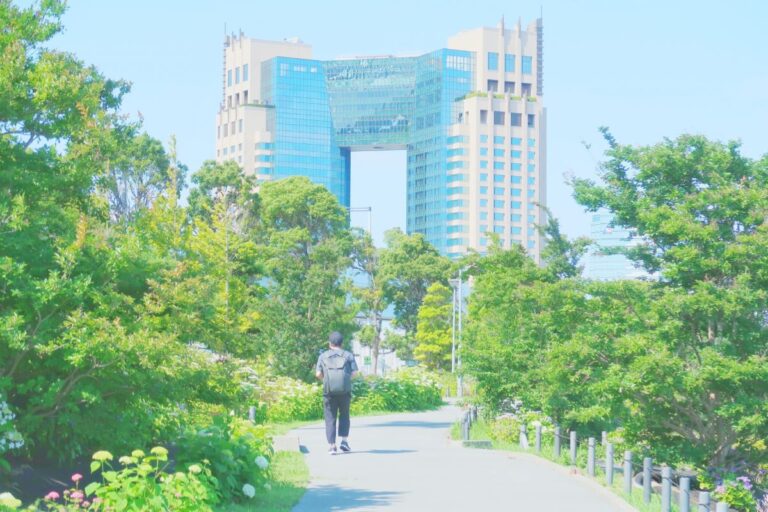

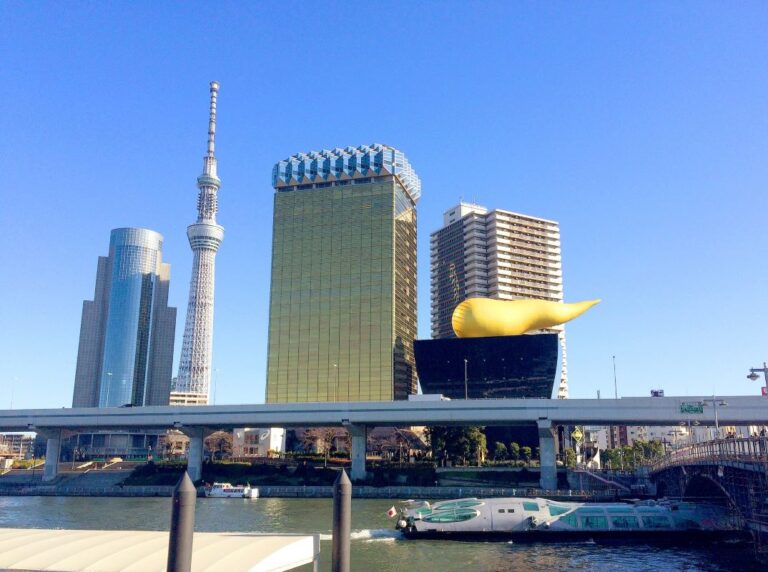
![[30 Minutes] Asakusa Ancient Trip Plan by Rickshaw Tour of Tokyo Sky Tree](https://tokyo-park.net/wp-content/uploads/30-minutes-asakusa-ancient-trip-plan-by-rickshaw-tour-of-tokyo-sky-tree.jpg)